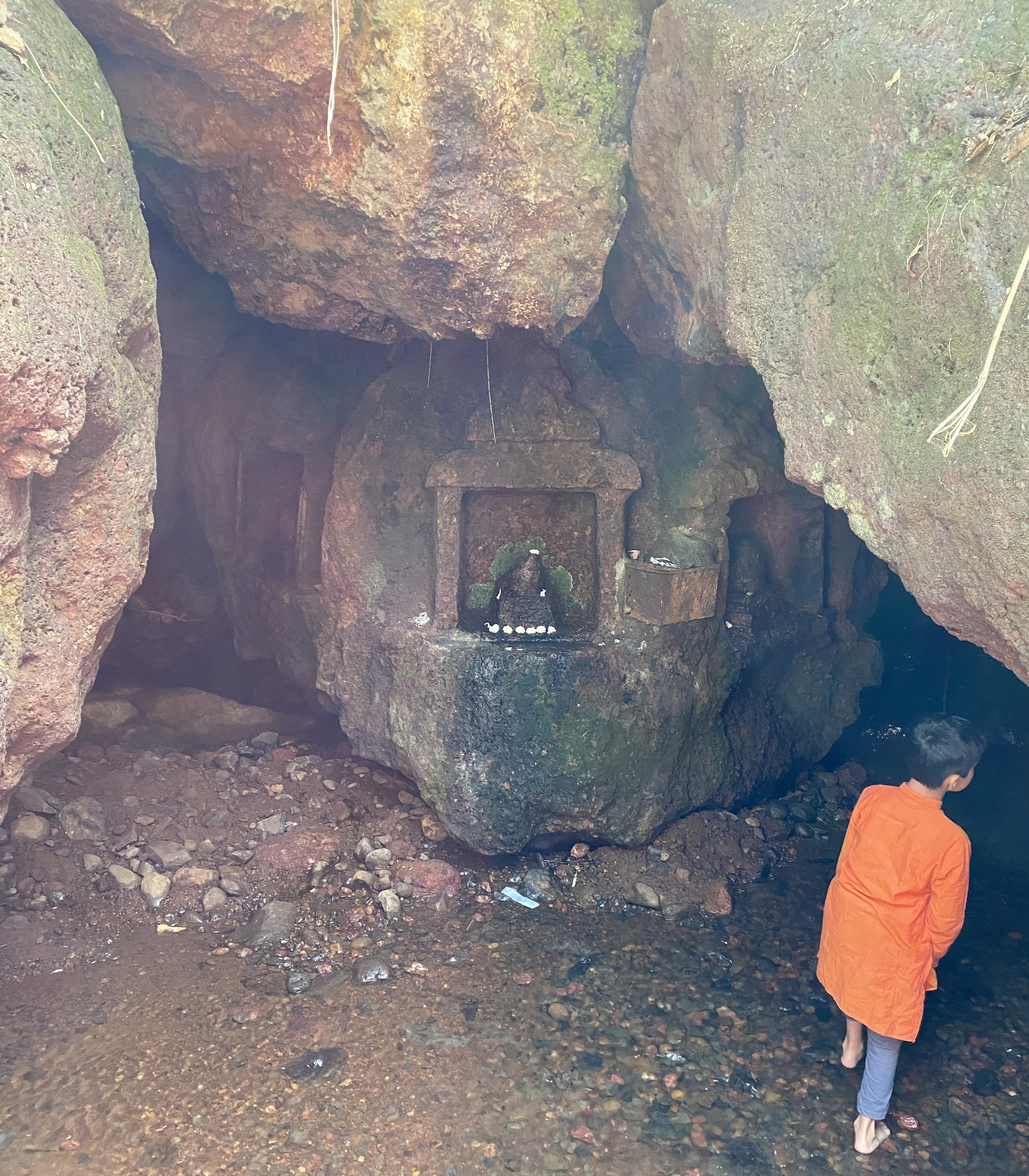Sri Rama Lingam Caves
One of the most spectacular places we went to on our visit to Kolhapur is known as the Sri Rama Lingam caves. None of the local people in our group had ever gone there and I’m not sure how we landed up there since nobody seemed to know much about it. We had to go through Palsambe village. The going was rather rough. There was no proper road – just a beaten track along which we bumped. There was absolutely no one in sight. The car went as far as the road allowed us to go and then stopped so we got out and went down the track following the musical sound of water. We were stopped by a beautiful rivulet dancing over stones and in the far distance was the cave. We waded through the water over slippery stones and entered the cave. It was quite unbelievable.
There was this big lingam over which there was a constant dhara of water. The cave had an opening at the top which let in a wonderful shower of sunlight which enabled us to see everything in detail. Since I didn’t have any vessel I used my hand to scoop up water and pour over the lingam which in any case was being bathed by this continuous flow of water from some unknown source.
Peering into the interior which was rather dark I could just about make out that there were twelve such lingams. The local belief is that these represent the twelve Jyotirlingams. However, the main lingam was obviously “swayambhu” (self-formed). The caves are always wet because of the water flowing over the walls all the time. The quantity of water coming into the cave increases during rainy season, but the source of water has not been identified. We went outside and noticed the beautiful Ganesha at the entrance. The structures around this temple looked terribly ancient.
Legend has it that these caves were built by the Pandavas during their stay in the forest. The forest had crept over the caves so that they nestled in the verdant, green bushes and trees and could hardly be seen. Apparently the site is also noted for its snake population. Cobras, bamboo pit vipers, green vine snakes, shield-tailed snakes are all supposed to be prevalent in the area. Luckily for us we did not know this at that time otherwise we would never have had the courage to explore the surroundings. I did notice a lot of strange looking plants which I later found were the Entada plants which is a great Ayurvedic medicinal herb.
We clambered up to one of the other caves surrounding the central cave. This had an endearing Ganesha. The rocks were all rather slippery so we desisted from clambering up the rocks to all the other caves. Who had made them and why? Was it Rama or the Pandavas or the seven rishis – the sapta rishis? Who knows? I hardly cared to know the answers.
A man from a nearby ashram appeared on the scene and gave us much of the information I have given above. His version was that these caves had existed from the Ramayana period and that Sri Rama is said to have stayed there with Sita and Lakshmana. I realised that the origin of these caves was shrouded in mystery. No one knows exactly when and why they were built. It was all conjecture.
He insisted that we go to his ashram. This was a pleasant experience and we felt the benign presence of his guru in their meditation hall.
As we left I was filled with an inexplicable joy at having had the great good fortune to have been brought to this holy spot which no doubt had the footprints of countless sages who had come and stayed there or passed through. I realised that there was no end to the countless blessings that had been heaped on us by the Divine Mother at Kolhapur!
All I could say was “Jai Maa! Jai Maa! Jai Maa!”
Aum Namashivaya!

